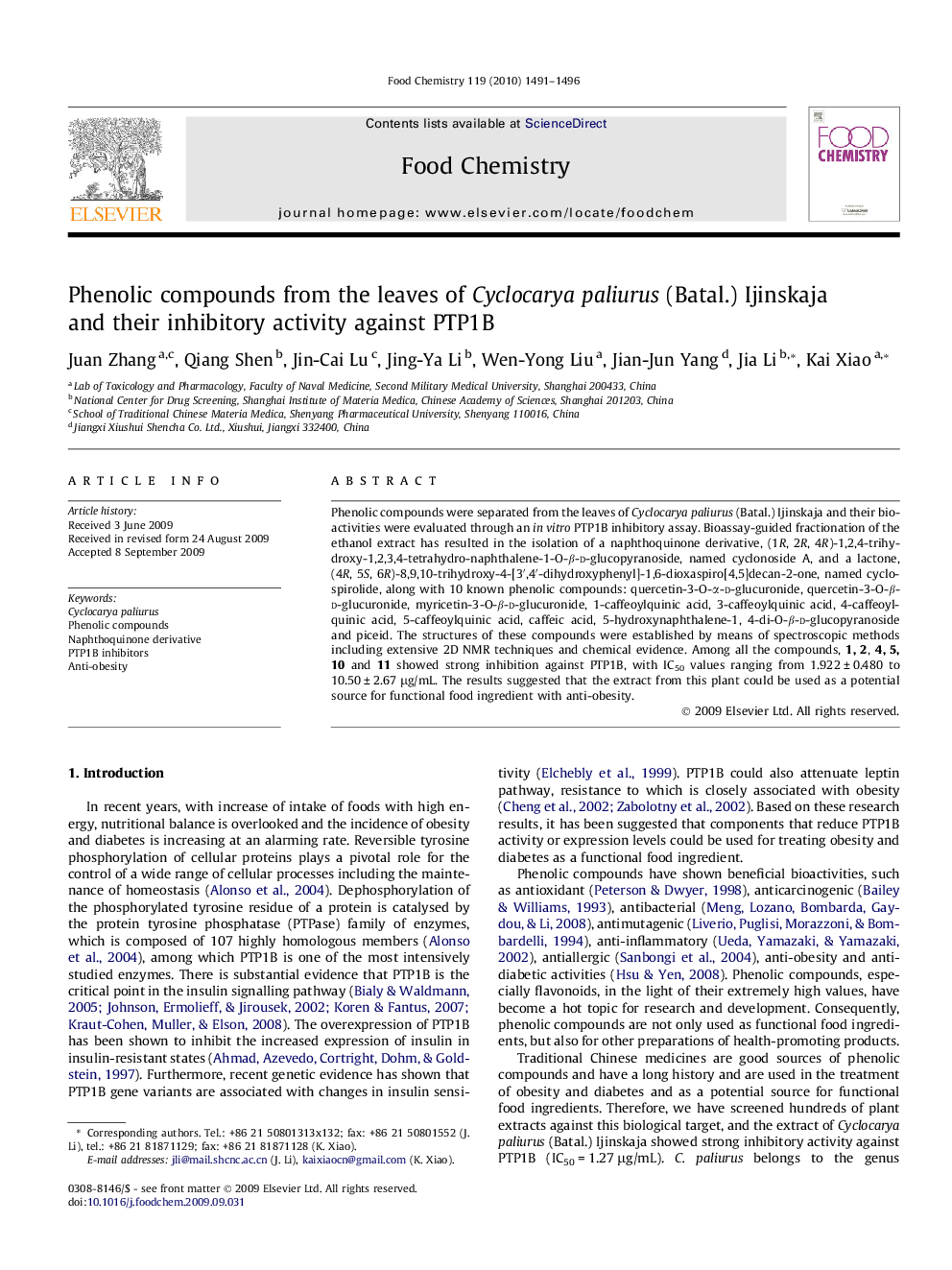| Article ID | Journal | Published Year | Pages | File Type |
|---|---|---|---|---|
| 1185426 | Food Chemistry | 2010 | 6 Pages |
Phenolic compounds were separated from the leaves of Cyclocarya paliurus (Batal.) Ijinskaja and their bioactivities were evaluated through an in vitro PTP1B inhibitory assay. Bioassay-guided fractionation of the ethanol extract has resulted in the isolation of a naphthoquinone derivative, (1R, 2R, 4R)-1,2,4-trihydroxy-1,2,3,4-tetrahydro-naphthalene-1-O-β-d-glucopyranoside, named cyclonoside A, and a lactone, (4R, 5S, 6R)-8,9,10-trihydroxy-4-[3′,4′-dihydroxyphenyl]-1,6-dioxaspiro[4,5]decan-2-one, named cyclospirolide, along with 10 known phenolic compounds: quercetin-3-O-α-d-glucuronide, quercetin-3-O-β-d-glucuronide, myricetin-3-O-β-d-glucuronide, 1-caffeoylquinic acid, 3-caffeoylquinic acid, 4-caffeoylquinic acid, 5-caffeoylquinic acid, caffeic acid, 5-hydroxynaphthalene-1, 4-di-O-β-d-glucopyranoside and piceid. The structures of these compounds were established by means of spectroscopic methods including extensive 2D NMR techniques and chemical evidence. Among all the compounds, 1, 2, 4, 5, 10 and 11 showed strong inhibition against PTP1B, with IC50 values ranging from 1.922 ± 0.480 to 10.50 ± 2.67 μg/mL. The results suggested that the extract from this plant could be used as a potential source for functional food ingredient with anti-obesity.
